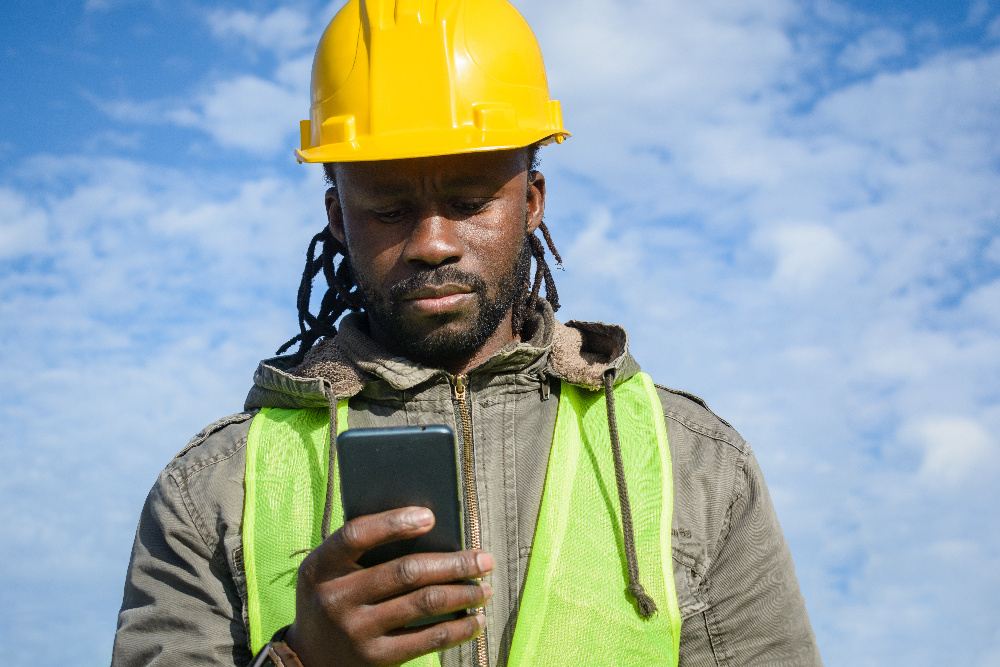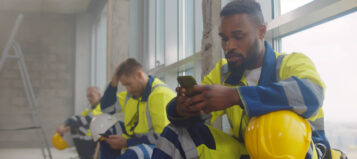
Supporting, prioritizing your crew’s well-being with AI + more
By Michael Bertolone
Look at any job description for a construction supervisor and you’ll find most the responsibilities revolve around organizational work. A superintendent coordinates all the activities of the site, including managing project costs, schedules, materials, subcontractors, etc. Usually, there’s a line thrown in about managing people. Despite such a small mention, we all know how difficult and impactful good management can be.
In today’s industry, effective management has taken on new meaning to include not just the development of job skills and physical safety, but also mental health. As leaders, we’re realizing how beneficial mentally resilient employees are. Studies show how poor mental health contributes to a loss of productivity in the workplace. This loss could come in the form of absenteeism, when workers don’t show up, or as presenteeism, when workers show up, but perform a fraction of their tasks, if any, and make more mistakes along the way. People with high mental resilience tend to be easier to manage, and better for the overall health of a project.
Supervisors are well-positioned to impact and improve employee mental health and not just for better business outcomes, but for the future of our industry. As it is, construction workers face some of the most severe mental health issues. They have the highest number of suicides across all industries and are nearly two times as likely to struggle with substance abuse.
Certainly, the job itself could be contributing to more mental health risks. Construction is a physically demanding job that has high rates of injury. Workers injured on the job may suffer from post-traumatic stress disorder in addition to chronic pain, leading them to self-medicate, or worse.
Beyond the daily grind, there is also a pervasive stigma around construction jobs. Media portrayals of the construction industry remain stuck in the 90s. On top of that, people in our industry often feel the need to maintain a tough façade, making them less likely to talk about mental health or to seek help.
As leaders, we can change attitudes toward mental health and help employees prioritize it. The best way to build mental resilience is to treat it like any other muscle used in construction: it needs work.
1) Lead by example
You can’t change the culture if you’re not part of the culture. One of the best ways to show fellow workers that taking time for your mental health is a strength, rather than a weakness, is to lead by example. This means talking about mental health and the resources your company offers, and reminding employees to use them. Data shows very few people take advantage of employee assistance programs today. Employees may need help navigating the employee handbook and complicated insurance offerings to better understand the support available.
2) Consider tech-based solutions
Don’t be surprised if people still don’t want to talk about mental health. The good news is there’s now therapeutic solutions that don’t require laying on a physical couch. AI-led therapy, especially some of which is backed by clinical evidence, can be a great resource for our industry. Not only are they anonymous, but they can be accessed from anywhere. At Local 18, we are testing a program that offers a blend of AI chat and human counseling services. It allows our members to take a break anytime, anywhere and receive support. This could take the form of a five-minute text exchange with the chatbot and a quick exercise on their phone, which would look the same as any other employee checking their cell during a break. The ease and anonymity make tech an attractive solution.
3) Measure outcomes
Of course, there is no point in implementing a new program if you can’t measure its impact on your workers. A simple, anonymous survey at regular intervals can help you understand where workers are and if they’re improving after a new offering has been rolled out. You can use the standard questions and methods for determining a person’s level of depression (Patient Health Questionnaire-9 objectively assesses depression) and anxiety (General Anxiety Disorder-7 measures severity of anxiety). You can also measure participation levels to see overall employee engagement.
4) Plan ahead
Adding mental health to the many things a supervisor is responsible for may seem like a daunting task, but remember that it will pay dividends in worker satisfaction and productivity. And by getting ahead of it now, superintendents can attract and retain younger employees entering the job market. Gen-Z expects wellness and mental health support from employers, as well as technology in their workplaces.
If we lead the industry toward a more practical and compassionate stance on mental health, in addition to improving our jobsites, we change the industry for the better and entice a new generation of workers.
Michael Bertolone is head of Local 18, the Ohio chapter of the International Union of Operating Engineers.




 Join our thriving community of 70,000+ superintendents and trade professionals on LinkedIn!
Join our thriving community of 70,000+ superintendents and trade professionals on LinkedIn! Search our job board for your next opportunity, or post an opening within your company.
Search our job board for your next opportunity, or post an opening within your company. Subscribe to our monthly
Construction Superintendent eNewsletter and stay current.
Subscribe to our monthly
Construction Superintendent eNewsletter and stay current.